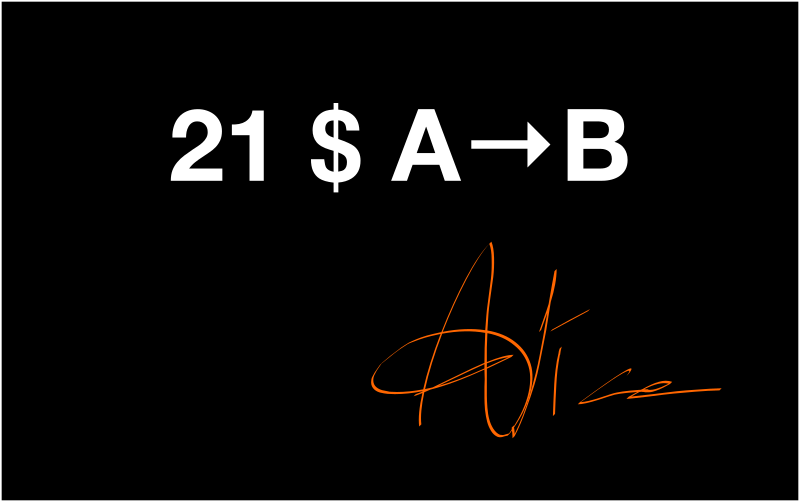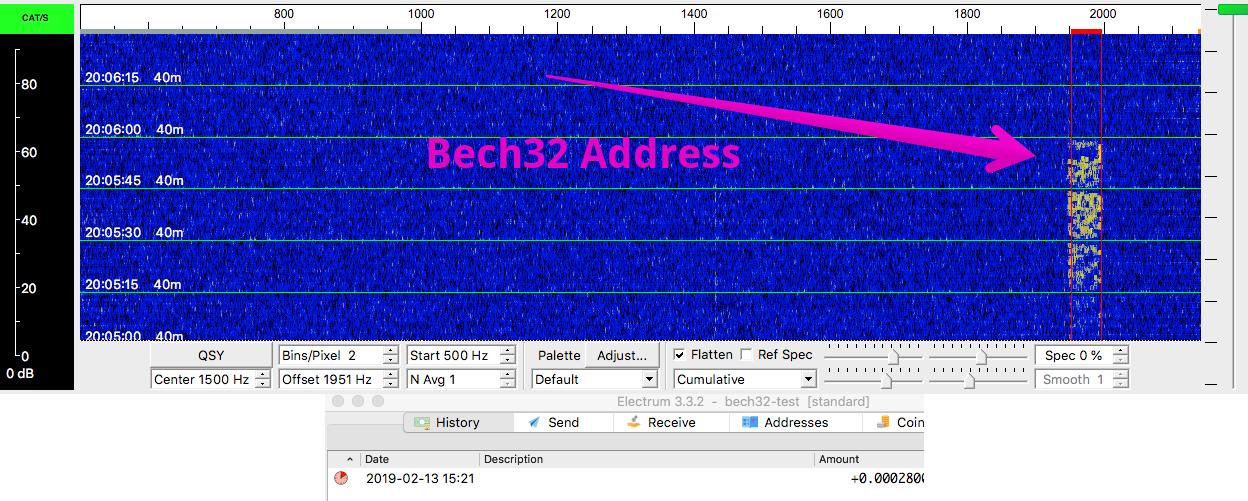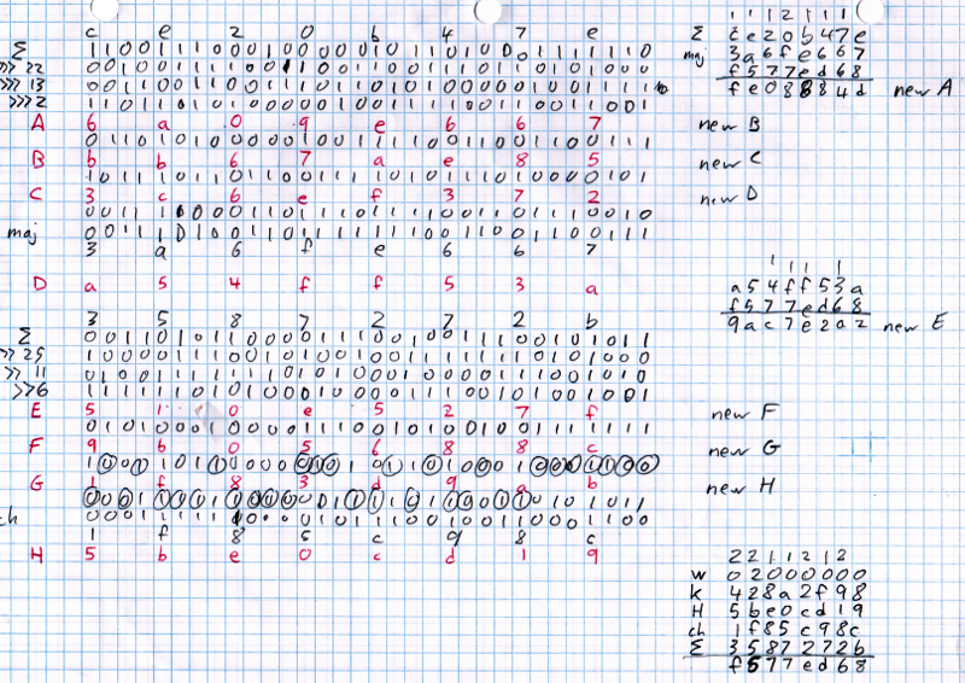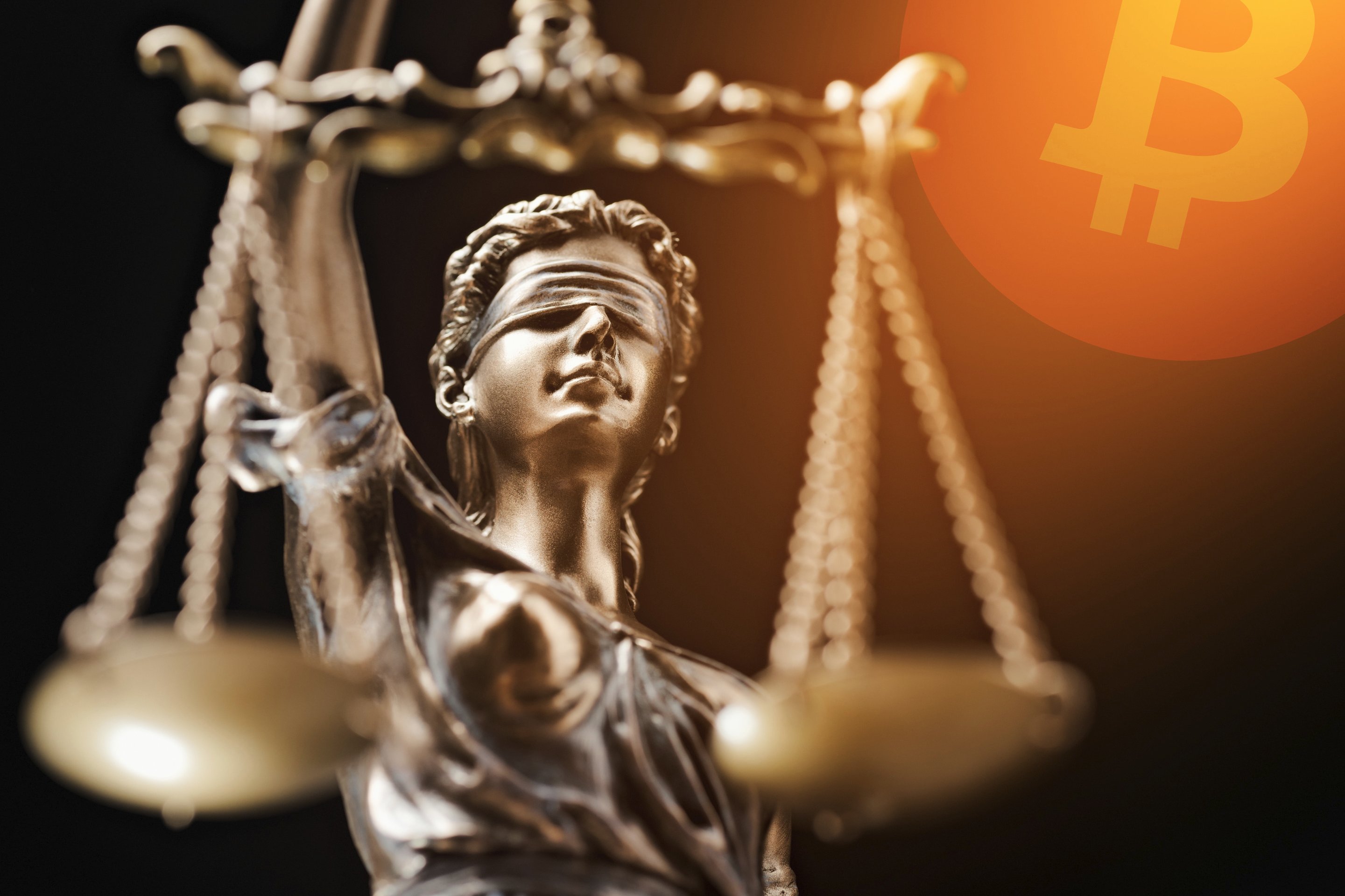Bitcoin is complicated and scary. Just like fire, electricity, computers, and every other ground-breaking invention before it. It is complicated and scary because most people do not understand how it works and why it might be useful.
Once you begin to understand how it works, you will begin to understand why it is so useful to people around the world. And I hope that once you truly understand its basic operational principles, you will begin to understand why outlawing Bitcoin is a foolish proposition.
In light of recent comments by legislators and politicians, we must not forget what Bitcoin does and how it does what it does. Bitcoin is text. Bitcoin is speech. Bitcoin is math. Bitcoin has no jurisdiction, just like 2+2=4 has no jurisdiction. Bitcoin knows no borders. Bitcoin is everywhere and nowhere, and if used and secured properly, bitcoin is as confiscatable as a thought. No amount of legalese or otherwise complicated language will change these facts.
Using Bitcoin does not require any special equipment. We use software and specialized hardware to use Bitcoin more efficiently, and in a more secure manner, but in theory, Bitcoin can be run on pen and paper.
The following statements are and will always be true:
- You can create a private key by flipping a coin.
- Holding a private key allows you to receive sats and create transactions.
- Creating a transaction is math.
- Sending a transaction is sending a message.
- Mining bitcoin is guessing a number.
- Everything in Bitcoin is information.
These statements will sound strange to you if you don’t know how Bitcoin operates, but they are true nonetheless. Thankfully, Bitcoin is an open system, which means that everyone can learn the operational details of the network. I encourage you to do that and, if you can, educate others. We must not forget what politicians are implying when they are musing about “banning wallets” and making up nonsensical and disingenuous adjectives such as “self-hosted” and “non-custodial.”
A wallet is nothing special; it can be just some words in your head.1 You don’t need specialized equipment to generate a secure wallet. A coin or some dice is all you need.
Creating a Wallet Is Flipping a Coin
To interact with the Bitcoin network, you need a wallet, which is to say you need a private key.2 While conventional concepts do not apply well to Bitcoin, one could argue that creating a public-private key pair is akin to creating an account. And since public keys are derived from private keys, we only have to answer one question: what are private keys, and how are they created?
A private key is a 256-bit number. That’s it. End of story.3
So, what exactly is a 256-bit number? Well, as the name suggests, a 256-bit number is a number that, when represented using zeros and ones, is 256 binary digits long. In other words: it’s a really big number.
⚠️ Warning: The private keys shown on this page are real private keys. Do not send bitcoins to or import/use any sample keys; you will lose your money. I repeat: YOU WILL LOSE YOUR MONEY
The following is a 256-bit number:
0010111011001011101110101011010110001001101111010001011010100110001001110010101110101010101100000001101100000111000000011100010100100001000001010001011011100000111000111010101001111101000110111010100011011111000101111100000110100010110110000010101010111111
These zeroes and ones - or, more accurately, the information contained in these zeroes ones - are a valid Bitcoin private key. You could use this information to receive and send transactions on the Bitcoin network. 4
Why is this important? It is important because I can create a Bitcoin wallet by sitting in my room, flipping a coin 256 times. If you want to outlaw “anonymous wallets,” you will have to outlaw this activity, along with all other techniques to create random numbers: rolling dice, drawing cards, measuring optical or atmospherical turbulences, and so on.
Further, since these zeros and ones are just information, you can represent them in countless different ways. The information does not change; just the representation of the information changes. The hexadecimal version 12e188aeb7c9aeb0eef7fac7c89e3b9b535a30b2ce8d6b74b706fa6f86b061e4 represents the same private key as the zeros and ones above. As does the following mnemonic code, which can be learned by heart with some practice:
concert, frozen, pull, battle, spend, fancy, orient, inside, quiz, submit, scare, mechanic, awake, mercy, lock, inside, language, tag, dash, control, borrow, hip, print, absorb
Remember: this information, this 256-bit number, is all you need to interact with the Bitcoin network. You do not need an ID, or passport, or utility bill, or proof of residency. You do not even need to be human. If you are in control of a Bitcoin private key, you can send and receive transactions.
If you want to understand Bitcoin, you will have to understand that a wallet can be created by flipping a coin 256 times.
Holding a Private Key Allows You to Earn Sats
You flipped a coin 256 times. Now what? Time to earn some money!
To receive sats, you need an address, which can be derived from your private key. Grab a pen and paper, go to your standing desk, and calculate your public key according to BIP32. If you are short on time or bad with math, don’t despair. There are online tools5 that will do the math for you. But remember that these software tools do nothing weird or magical. It’s just math, and you can do it yourself using nothing but a pen and paper.
The outcome of all that math will produce a number that, when encoded as a bitcoin address, will look something like this:
bc1qd6yf555vwns0mpgy55epux4tzf8a40nmw2vpgq
Share your address with someone else, and you are ready to receive your first sats. Keep in mind that you don’t have to share the address in this exact format. You can encode it as a QR code, as a number, as emojis,6 as an audio file, or as braille. You can put it in your invoice, display it on your homepage, in your profile, send it via a messaging application, or tattoo it on your body. It is just information. It can be represented in countless ways.



Also, keep in mind that you do not have to be online to receive sats. The sats won’t be sent to you directly. Someone will sign a message that will transfer the sats to your name - if you excuse my imprecise language. It’s not your name, of course, since Bitcoin doesn’t know any names. But that would be one way to think about it.
Someone just broadcast a transaction that includes your address as an output, which means that you will receive your first sats soon. Now what? Time to create a transaction and pass them on.
Creating a Transaction Is Math
If you have a private key, you can create a transaction. Remember that a private key is just a large number. What can you do with numbers? You guessed it: math!
In its simplest form, a bitcoin transaction is a message that says something like the following:
I, Alice, hereby transfer 21 sats to Bob. Signed, Alice.
Real transactions might have multiple senders and multiple recipients as well as various other tweaks and efficiencies, but the essence remains the same. What is important to note is that nothing is secret in a transaction. All transactions are broadcast across the whole network, viewable and verifiable by everyone. All transactions are plain text. Nothing is encrypted.
To write “Alice sends 21 sats to Bob” in a way that makes sense to the Bitcoin network, a special, more precise format has to be used. Don’t get confused by the format of the message or how the message is encoded. It doesn’t matter if the language is English or something that is easier to understand for computers. The meaning of the message remains the same. I could write the above as [A]--21-->[B] and sign it with the private key that corresponds to A, and it would essentially be the same thing.

This brings us to the important part: the signature. Hand-written signatures are not very useful in a digital world, which is why mathematicians and cryptographers came up with a modern equivalent: digital signatures.
I will not go into detail explaining how they work, but the important part is this: it’s all just math and numbers. Your private key acts as a large secret number that is used to perform mathematical operations. The result of these mathematical operations is a digital signature (another number) that can be checked using your public key, which is, again, a number.
Math is what makes public-key cryptography work. The beauty of this math is that you can verify that the sender is in control of a secret number without revealing the secret number. This is what cryptographic signatures do.
Let’s look at an example. The following is a valid transaction:7
01000000017967a5185e907a25225574544c31f7b059c1a191d65b53dcc1554d339c4f9efc010000006a47304402206a2eb16b7b92051d0fa38c133e67684ed064effada1d7f925c842da401d4f22702201f196b10e6e4b4a9fff948e5c5d71ec5da53e90529c8dbd122bff2b1d21dc8a90121039b7bcd0824b9a9164f7ba098408e63e5b7e3cf90835cceb19868f54f8961a825ffffffff014baf2100000000001976a914db4d1141d0048b1ed15839d0b7a4c488cd368b0e88ac00000000
You can use various tools8 to decode and inspect it. These tools help us humans to make sense of it all, but the underlying reality remains: it’s numbers all the way down.

To reiterate, the following is all you have to do to interact with the Bitcoin network:
- Step 1: Flip a coin a couple of times.
- Step 2: Do some math.
- Step 3: Send and receive messages.
Outlawing any of these three steps is ridiculous. It is ridiculous because of the peculiar nature of information. If you outlaw certain kinds of information, you implicitly outlaw all representations of this information: text, speech, images, emojis, QR codes, sign language, interpretive dance, and so on. And since all information can be represented as a number - including math and computer code itself, it boils down to making numbers illegal.
Although banning numbers is as ridiculous as it sounds, it has happened in the past. Illegal numbers and illegal primes are a thing precisely because some people tried to outlaw certain kinds of information.
Society and law makers will have to grapple with the fact that Bitcoin wallets and transactions are just information, as is everything else in Bitcoin.
Spending Sats Is Sending a Message
Because a Bitcoin transaction is just information, sending sats to someone is propagating that information, or, in other words: sending a message. You don’t even have to send the message to a particular person. Base-layer transactions are broadcast transactions. They are sent to everyone on the network.
Keep in mind that any communications channel can be used to send and receive information. The internet is simply the most efficient communications tool we currently have. But there is no reason why you couldn’t use a satellite connection or ham radio, which people are and have been using, be it out of fun or necessity.

The fact that spending sats is sending a message doesn’t change on higher layers. Nodes on the Lightning Network are doing the same thing: they are sending messages back and forth. Nothing more, nothing less.
This hides two truths about Bitcoin in plain sight:
- Bitcoin is a messaging protocol
- All messages are plain text
Messages might be sent through an encrypted communications channel, but the messages of the protocol are and will always be plain text. They have to be. The whole point of Bitcoin is that everything is easily verifiable by everyone.
Outlawing Bitcoin implies outlawing messaging. Keep in mind that we are dealing with pure information. Information can be encoded in virtually endless ways: different formats, same meaning. And herein lies the crux: you can not outlaw the meaning of a message. If you do not know the protocol, the meaning of the message will elude you. If you do not speak the language, you don’t know what is said or why it is being said.
This brings us to the last piece of the Bitcoin protocol puzzle: mining.
Mining Bitcoin Is Guessing a Number
Most people do not understand what Bitcoin mining is and how it works. They do not speak the language of Bitcoin, failing to understand both what is spoken and why it is spoken in the first place.
Bitcoin miners aren’t doing anything special, just like computers aren’t doing anything special. They are crunching numbers.
Not too long ago, when you said “computer,” you were referring to a person. It was a job description, not a thing. The most efficient way to run the numbers was to pay a person to sit down and do the math.

Over time, we’ve built ever more efficient contraptions to do the math for us. Today, when we say “computer,” we mean something that uses microchips instead of brains to do the computing. But the underlying reality has not changed: computers crunch numbers. They do not do anything special, or devious, or magical. The same is true for ASICs.
Bitcoin, like NASA software before it, can run on a human substrate as well. We do not need ASICs to mine bitcoin. We could do it by hand. We could use our brains. It’s slow, and cumbersome, and inefficient. But we could absolutely do it.

Just like you could use pigeons instead of computers to run the internet, you could use humans instead of silicon chips to run bitcoin. It would be highly inefficient, yes, but it would work just the same.
As Ken Shirriff showed in his 2014 video, SHA-256 is simple enough to be computed with pen and paper. He managed to do one round of SHA-256 in 16 minutes and 45 seconds, which works out to a hash rate of 0.67 hashes per day.
I am showing you all this to make it explicit what the basic building blocks of Bitcoin are: numbers, math, and the exchange of messages.
This is true for all processes in Bitcoin. It doesn’t matter if you create a private key, derive a public key, generate a Bitcoin address, mine a block, sign a transaction, or open a Lightning channel. All you are doing is coming up with or finding large numbers, manipulating these numbers via mathematical equations, and sending the result of these equations to your peers. That’s it.
Communication does not lose constitutional protection as “speech” simply because it is expressed in the language of computer code. Mathematical formulae and musical scores are written in “code,” i.e., symbolic notations not comprehensible to the uninitiated, and yet both are covered by the First Amendment. If someone chose to write a novel entirely in computer object code by using strings of 1’s and 0’s for each letter of each word, the resulting work would be no different for constitutional purposes than if it had been written in English.
Once you understand that Bitcoin is information - and that computers and the internet are just the best substrates to transform and transmit this information - the implications of outlawing Bitcoin should become clear. You can put Bitcoin in a book, which means you would have to ban the publication of books. You can speak bitcoin by uttering 12 words, which means you would have to ban speech. You can mine bitcoin with pen and paper, which means you would have to outlaw math, or thinking, or writing. You can store bitcoin in your head, which means, of course, that having certain thoughts is illegal if “holding bitcoin” is illegal.
If having 12 words in your head is illegal, something is terribly wrong with the law. If the police storm your building because you are finding or creating a random number in the privacy of your own home, something is terribly wrong with the police. If the peaceful exchange of messages is seen as dangerous or immoral by society, something is terribly wrong with society. If speaking or knowing numbers becomes a criminal act, I don’t want to be a law-abiding citizen in the first place.
Bitcoin is pure information. It utilizes the properties of information as well as the transformation of information - computation - to build up a shared construct that we can independently agree upon and verify. It is nothing but math and numbers. Zeros and ones, sent back and forth by voluntary participants that want to send and receive messages in peace.
Conclusion
A Bitcoin private key is a large number. When represented as words, this number can be stored in your head. A private key is all that is required to send and receive payments. You can sign and verify transactions with pen and paper. You can mine bitcoin with pen and paper. Bitcoin is just a messaging protocol that does these operations efficiently and automatically.
Understanding Bitcoin from first principles will make it obvious that the idea of banning “anonymous crypto wallets” is not feasible. You would have to outlaw the generation of entropy, the act of coming up with random numbers. You would have to surveil everyone at all times, kicking in their door and arresting them once they sit down and start flipping a coin or rolling some dice. You would have to pass legislation that criminalizes thought itself since creating an “anonymous bitcoin wallet” is nothing more than coming up with 12 random words.
Dear legislators, I ask you earnestly: Are you prepared to outlaw thought itself? Should math be illegal? Do you genuinely believe that outlawing speech is a good idea?
I hope that we can all agree that thought and speech are paramount to a free and prosperous society. And I hope that, as more and more people understand how Bitcoin operates, citizens and legislators alike will realize that Bitcoin is just that: thought and speech.
Further Reading
- Bitcoin mining the hard way by Ken Shirriff
- Using the raw Bitcoin protocol by Ken Shirriff
- Create a Bitcoin transaction by hand by Ádám Ficsór
- Remembering the Case that Established Code as Speech by EFF
- Why America Can’t Regulate Bitcoin by Beautyon
- Lesson 6: The power of free speech
This article is largely based on two chapters of my upcoming book 21 Ways.
Warning: Do not use brain wallets unless absolutely necessary. Forgetfulness and loss of brain function will lead to lost funds. Do not create private keys in your head. The human brain is terrible at coming up with random numbers. ↩
A Bitcoin wallet is usually a piece of software or hardware that holds your private keys and signs transactions. Calling these things “wallets” wasn’t the best idea, but we are stuck with it. It would be better to talk about (sets of) private keys and signers. Private keys can be cold (never touching the internet) or hot. Signers can be implemented as software or hardware. ↩
Bitcoin Wiki, Private Key: https://en.bitcoin.it/wiki/Private_key ↩
Don’t do this. Since this private key is public information, whatever money you put into addresses generated by it will be gone in seconds. Seriously. Don’t use any private key you find online, ever. (Also: don’t use your brain to make one up. Use coins, or dice, or hardware wallets, or combine multiple sources of entropy. If you can think of it, someone else will too.) ↩
This tool allows you to enter coin flips: https://bip32jp.github.io/english/ ↩
I used “emojicoding” to transform my bitcoin address into emojis. There is also “emojaddress,” Stephan Snigirev’s Emoji Bitcoin Wallet, and others. ↩
You can look up the transaction in a block explorer yourself by entering the following ID: fc9e4f9c334d55c1dc535bd691a1c159b0f7314c54745522257a905e18a56779 ↩
There are many tools to decode transactions. Here is one example: https://live.blockcypher.com/btc/decodetx/ ↩
Translations
- Arabic translation by Arabic Hodl
- Spanish translation by Danny Do Bitcoin
- Spanish audio by Elchicodel Bitcoin
- Portuguese translation by Explica Bitcoin
- German audio by Fat Joe
- English audio by Guy Swann
- German translation by Juniormind
- Greek translation by Nina
- Norwegian translation by Sebbikul
- French translation by Sovereign Monk
- English video by Till Musshoff
- German video by Till Musshoff
- Portuguese audio by bitcoinheiros
Want to help? Add a translation!
🧡
Found this valuable? Don't have sats to spare? Consider sharing it, translating it, or remixing it.Confused? Learn more about the V4V concept.
